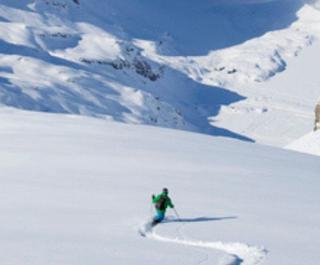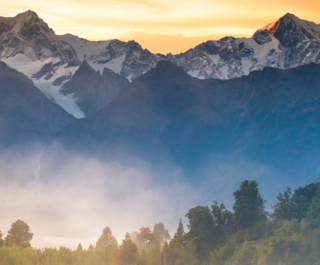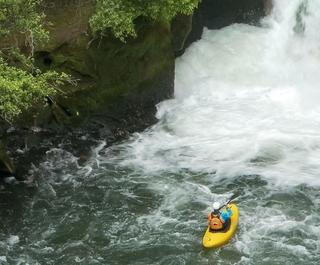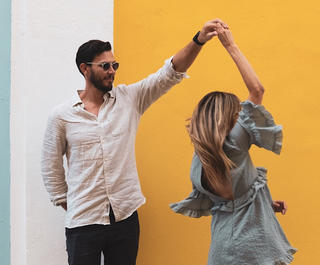
Ever since Aussies discovered the delights so-called ‘Japow’ they have been flocking to Japan’s mountain resorts in ever-increasing numbers. So what is Japow? Powder. The winter climate in Japan is especially cold and dry, and these conditions make for a ski experience like nowhere else on Earth.
Ask most Aussies about skiing in Japan, and they will have heard of Niseko. On Japan’s northern island of Hokkaido, Niseko is so popular with Aussies that it’s sometimes referred to as “Kuta Beach on Ice”.
 Getting ready to go off-piste
Getting ready to go off-piste
It’s not the only place to find Japow though. Japan has over 500 ski resorts, as many as the United States, in a country that is a fraction of the size. Nagano, on Japan’s south island, is a 90-minute bullet train ride from Tokyo.
Hokkaido and Nagano, the two largest ski regions in Japan, have fantastic skiing conditions, but if you’re after steeper terrain and a more authentic Japanese ski experience, Nagano is a great choice.
Nagano is also close to a number of fantastic non-ski related attractions, including the ancient onsen town of Yamonouchi, and the world-famous snow monkeys of Jigokudani.
 The Hakuba ski jump is a winter Olympics legacy
The Hakuba ski jump is a winter Olympics legacy
Hakuba is the best-known mountain resort in Nagano. The village of Hakuba is surrounded by a total of six ski areas: Iwatake, Goryu, Hakuba47, Happo-one, Tsugaike and Cortina. Many of the Nagano Winter Olympics events were hosted here back in 1998.
Each of Hakuba’s ski areas has a great range of green, red and black runs, so suitable for skiers of all levels of fitness and ability, but some have more black runs than others, so it’s a good idea to check out the trail maps before choosing your mountain – equally so if you’re a beginner or an advanced skier.
 Iwatake has runs to suit kids
Iwatake has runs to suit kids
Iwatake has wide, open runs, a great variety of runs and a couple of fun parks – Love Snow Park and Wood Park. 50 per cent of runs are intermediate, so suits both beginners and intermediate skiers.
Hakuba47 and Goryu are connected over the mountaintop via gondola and between the two of them offer great variety, with mogul slopes, snowboarding parks, jumps and a half pipe at Hakuba47. They’re also both open early in the morning and are lit up for night skiing.
There are a lot of long fast runs so best suited for advanced skiers.
At Hakuba 47 you can also take a spin on a skidoo – no experience or bike licence required if you’re game, and if you’re not, an experienced driver will take you as a pillion passenger.
Happo-one is the largest ski area with an 8,000-metre long slope and an altitude differential of 1,017 metres. There are lots of long groomed intermediate slopes, and access to spectacular back country skiing for more experienced skiers.
 The breathtaking view from the Hakuba ski jump
The breathtaking view from the Hakuba ski jump
Another non-skiing activity to try out here is snow-shoeing. Snow shoes can be hired at most ski rental outlets and you have the option of joining a guided tour or just going it alone (be sure to check in first with the ranger at the top of the mountain).
Tsugaike is superb for beginners and intermediates and it also has some very mellow back country and heli-skiing in Spring.
Cortina is a favourite for powder hounds, with steep tree skiing and lift-accessed sidecountry.
Two hours away in Shiga Kogen is one of the largest mountain resorts in Japan – possibly in the whole of Asia. A lift pass will get you on all 53 lifts and while there are regular shuttle buses between each ski area, with a couple of exceptions, it is possible to ski from one end to the other, passing through a few rather interesting connecting runs.
Most mountain areas in this enormous park have a variety of runs, ranging from green to black so they are accessible for beginners and there are certainly also enough challenges for the more experienced.
The mountain park sits within Joshinetsu National Park, so development is limited and the area is surrounded by a rather stunning wilderness.
A guide to Niseko powder. Satisfy Your Fresh Powder Cravings In Niseko
What to do and what not to do at the onsen. How To Onsen With Confidence
It really is spectacular – especially the famous Snow Monsters or ‘Juhyo’. These are pine trees so heavily laden with snow that they resemble creatures frozen in time. They are especially visible on top of Mt Yokoteyama – where, at 2307 metres you’ll also find Asia’s highest Starbucks.
At each end of Shiga Kogen there are ski-only areas, one of which is the only route down from Starbucks, and as a skier, it is kind of nice to ski down the mountain without the ominous sound of boarders shredding the slopes behind you.
 Getting around the Nagano slopes
Getting around the Nagano slopes
If you’re a boarder, it’s worth visiting nearby Ryuoo Ski Park and X-JAM Takai Fuji, about 40 minute’s drive from the main ski-area of Shiga Kogen, but be sure to brush up on your Japanese before setting off, as there’s no English language signage along the way.
There are plenty of beginner slopes lower down, but only black runs from the top of Ryuoo Ropeway – one of the largest gondolas in Asia.
It’s not for the faint hearted, with slopes as steep as 38 degrees and waist deep powder.
Some runs are more open than others, some are mere corridors, and if that’s not challenging enough, you can go off-piste through the trees – it’s easy enough to find your way back to the valley.
In between the two resorts is the onsen town of Yamanouchi, which is surrounded by some of the country’s oldest traditional onsen villages, some dating back to 700AD.
Shibu Onsen is estimated to be 1300 years old and its narrow lanes are great fun to explore. Just down the road, there are hot springs that attract a few locals of a different sort: monkeys. Jigokudani Snow Monkey Park is well worth visiting to see the world-famous spectacle of monkeys having a bath in steaming hot springs surrounded by snow.










